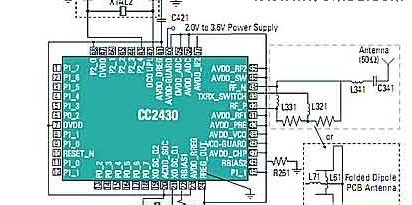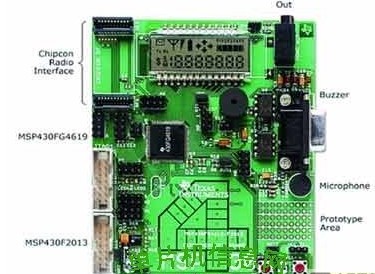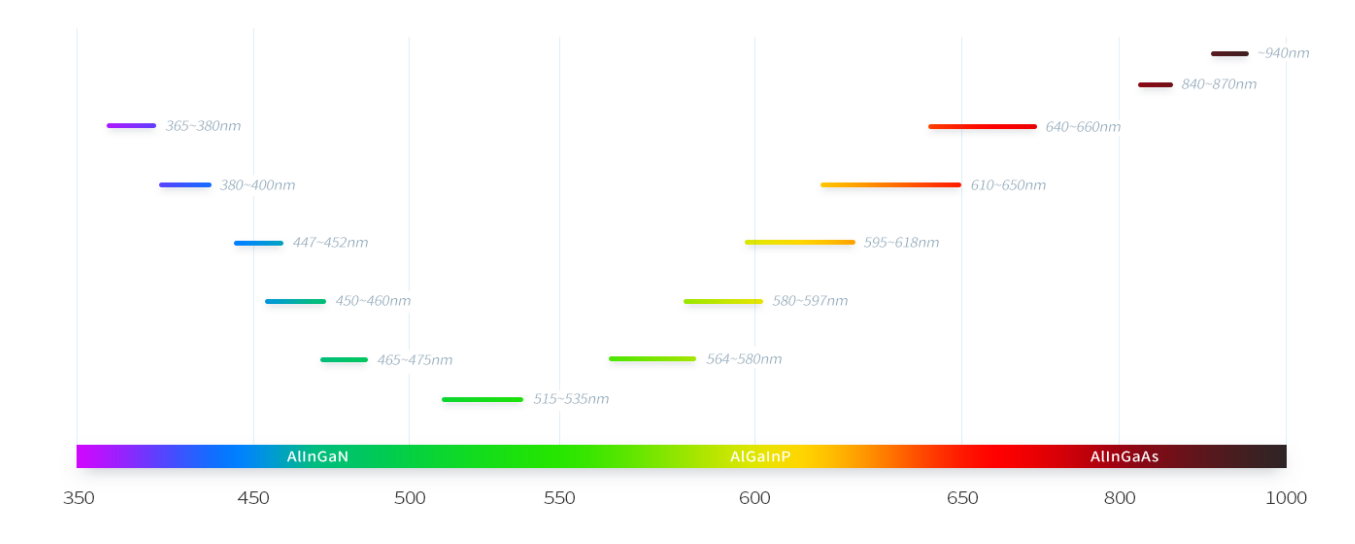The specific application of single chip microcomputer in industrial wireless network
The specific application of single chip microcomputer in industrial wireless network
Just as many general-purpose microcontrollers (MCUs) today have integrated USB, CAN and Ethernet as standard peripherals inside the chip, more and more wireless network chips and wireless network solutions are also developing towards integrated SoC, such as the first First-generation products, Nordic Corporation nRF905, Chipcon Corporation cc1010 They integrate 8051 compatible microcontrollers. These wireless microcontrollers are suitable for general point-to-point and point-to-multipoint private network applications, such as single product remote control and meter reading devices. Wireless communication technology provides a convenient way for the interconnection of smart devices. As a network technology for industrial and home automation, industrial wireless networks are also developing in the direction of intelligence, standards and energy saving.
Typical industrial wireless network
The current wireless network technologies used in the field of industrial control and consumer electronics include ZigBee, wireless local area network (Wi-Fi), Bluetooth (Blutooth), GPRS general packet radio service, ISM, IrDA, etc. In the future, there can also be 3G, ultra-wideband (UWB) ), Wireless USB, Wimax, etc. Of course, there are also a large number of private and dedicated wireless networks used in industrial control and consumer electronics devices, of which ZigBee and GPRS are currently discussed and used in domestic industrial control, and Bluetooth and wireless LAN are used in consumer electronics products. Such as mobile phones, headsets, printers, cameras, and wireless protocols widely used in home and small and medium-sized enterprise networks (individual industrial products are also used, such as wireless video surveillance and car audio systems). Of course, private wireless network technologies and products have many applications in industry.
ZigBee is a low-power, short-range and low-speed wireless network technology. It works at the 2.4GHz international license-free frequency. In IEEE standards, it is a wireless personal area network in the same 802 family as wireless LAN and Bluetooth. ZigBee has two Partly composed, the physical and link layers conform to IEEE802.15.4, and the network and application layers conform to the ZigBee Alliance specifications. The ZigBee Alliance () is a non-profit organization established in 2002 with more than 200 members including TI, Honeywell, and Huawei. The ZigBee Alliance is committed to promoting platforms compatible with 802.15.4 and ZigBee protocols, formulating network layers and The public specification of the application architecture hopes to popularize the ZigBee standard in building automation, home control, household appliances, industrial automatic control, and computer peripherals.
GPRS is a packet data bearing service developed on the existing GSM network. It works on the standard GSM frequency. Because it is a packet switching system, it is suitable for industrial bursts and a small amount of data transmission. Also because the GSM network covers a wide range , Always-on features, GPRS features are suitable for remote monitoring and measurement systems in industrial control. In industrial control applications, the GPRS chip generally appears in the form of a wireless data transmission module. It is connected to the single-chip computer through the RS232 full-duplex interface. These modules are built in the software with GPRS, PPP, and TCP / IP protocols. The single-chip computer uses AT commands. The set-to-module sends out test, connection and data sending and receiving instructions, and the GPRS module enters the Internet through China Mobile cmnet to communicate with other terminals or servers. Common modules currently on the market are Siemens G24TC45, TC35i, Freescale G24, Sony Ericsson GR47 / 48, and Wavecom's GPRS SoC module WMP50 / 100 with integrated ARM9 core. There are two types of GPRS module: TCP / IP protocol and without protocol. Generally speaking, if the embedded operating system and TCP / IP protocol are supported on the MCU side, or the application requires only sending and receiving SMS and voice functions, you can Select the module without protocol.
Wireless MCU
Advanced SoC technology is playing an important role in wireless applications. The CC2430 released by Texas Instruments after the acquisition of Chipcon is the first ZigBee microcontroller on the market. See Figure 1. It integrates the protocol stack z-stack in the internal flash memory of the chip. It has a stable and reliable CC2420 transceiver. 8051 core, 8KRAM, externally equipped with I / O ports, ADC, SPI, UART and AES128 security coprocessors, the three versions are 32/64 / 128K flash memory, taking 128K as an example, deducting the basic z-stack protocol also There is 3/4 space for application code. Even with the complete ZigBee protocol, there is nearly 1/2 space for application code. In addition to processing communication protocols, such a wireless microcontroller can also complete some monitoring and display tasks. In this way, wireless single-chip microcomputers can be combined with general single-chip microcomputers or embedded CPUs through SPI or UART. The CC2480 new-generation single-chip ZibBee certified processor was released in April 2008. It shows an example of integration with TI MSP430 general-purpose low-power microcontrollers.

Figure 1 CC2430 application circuit
Another chip giant in the field of industrial control-Freescale's single-chip ZigBee processor MC1321X is also very similar, integrated HC08 microcontroller core, 16/32 / 64K flash memory, GPIO, I2C and ADC, software is The Beestack protocol, except that up to 4K RAM seems smaller for more tasks. However, with its experience and advantages in 32-bit microcontroller Coldfire and system software, Freescale is more distinctive in meeting the flexibility requirements of user applications. It is the first to provide solutions from low to medium to high levels, see Figure 2 .

Figure 2 Freescale ZigBee solution
The GPRS SoC wireless single chip microcomputer represented by Wavecom is also demonstrating the revolution of the GPRS wireless processor. For example, WMP50 is an industrial processor with quad-band GSM network wireless communication, built-in ARM9 CPU, support 128K flash memory, 128K RAM, external 11 GPIO, I2C, SPI, 5X5 keyboard, 2 UART, USB 2.0 parallel port, ADC, DAC, etc. There is a compulsory real-time multi-tasking operating system inside WMP50. It supports application tasks to work in a higher priority than GPRS tasks, that is, it can ensure the control response requirements. In short, whether it is a GPRS wireless single-chip microcomputer, or ZigBee single-chip microcomputer are developing in the direction of lower cost, more standardized and higher performance. In April 2007, the rising star jennic launched the $ 5 zigbee / IEEE802.15.4 reference design. This price includes the BOM cost of the JN513932 wireless single-chip PCB antenna design and other auxiliary devices. It is said that RF performance can reach a distance of 1 km.
Wireless monolithic system
The wireless single-chip microcomputer combined with the C language development and debugging tool can be competent for the system design of a transmission or receiving module, such as a wireless sensor node designed using CC2430, IAR ’s embedded workbench (EW) compilation and debugging tool, and TI ’s z-stack simpleAPI. You can use TInyOS for wireless sensor networks, or uc / OS-II, or do not use an embedded operating system, for example, wireless remote meter reading terminal, you can use MSP430 or CYGNAL C8051 or HC08 microcontroller and a wireless data transmission module , Such as G24, development tools can use KEIL IDE or IAR EW430 / 8051, or codewarror, G24 built-in TCP / IP and GPRS protocol, through the use of AT command test, connect to the Internet, connect to the server, send and receive data to complete the GPRS operation The task of wireless communication. The single chip microcomputer completes the data collection task of the electric meter through the sensor. However, if you plan to design a communication node for a smart home, such wireless MCUs will not be able to meet the demand, because such nodes except for them collect indoor environment (such as temperature, humidity), electricity, water and gas through the ZigBee network. In addition to the data in the table, home appliance switches and home security alarms, another very important function is that this node should also be connected to the home server through a wired Ethernet network or wireless Wi-Fi network. This server is a home PC, TV, video, audio At the core of the smart home, communication nodes, home servers and Internet (cell broadband) routers form a home network system.
To design and implement such a communication node requires certain system software support and a certain amount of processor capacity, because it is an industrial device, and its reliability, safety, power consumption and easy operation requirements are much stricter than household appliances. There are two design methods currently seen. One is to use a large-scale embedded operating system, such as Linux and WinCE, which have good network and device driver support capabilities at the cost of requiring an ARM9 or more MMU embedded processing. Devices, 32M storage space and more than 32M execution space (WinCE requirements may be higher), such as the industry ’s leading wireless sensor network platform company Crossbow ’s imote2 (aggregation node) using Marvell 416 MHz PXA271 processor and a TI company ZigBee transceiver The advantages of such a design are obvious, but then the possible problem is how to control the power consumption and reliability of the system. Most industrial wireless networks are placed in an unattended site, or they may be a harsh natural environment, whether open source Linux, commercial embedded Linux, or WinCE power management technology are still not perfect, the system The functions and time of booting and recovery cannot fully meet the requirements of industrial control applications. Another alternative is the solution recommended by many MCU semiconductor companies; the hardware is ST and NXP ARM microcontrollers and Freescale coldfire microcontrollers, such as MCF52335, and the system software is the Nichelite coldfire TCP / IP Lite cooperation between Interniche and Freescale. coldfire free lightweight embedded TCP / IP software, which includes TCP, UDP, ICMP, DHCP (client), TFTP and a simple non-preemptive RTOS (), only about 20K of code, plus Freescale Web server, Flash file system, can be satisfied for the application of industrial network convergence point. Of course, if these free software modules can not meet the requirements of the application, Interniche also has PPP, SNMP, DHCP (server), FTP server, IPSEC, RTP and other module options, and even upgrade to the fully functional version of nichestack. ST ARM and NXP LPC microcontrollers also have similar solutions based on Nichelite. The advantage of this solution is that MCU can use ARM / coldfire Flash MCU with low frequency to reduce power consumption and increase reliability. The system software is freely authorized by the semiconductor company to users, so that users only need to purchase conventional MCU development tools, such as IAR EW, ARM MDK, Codewarrior can complete the design task of an industrial network communication node, the development difficulty and the overall cost of product accounting are lower.
Taking a closer look, traditional single-chip microcomputers are striding into all aspects of the industrial wireless network field. In addition to the previous SoC single-chip wireless single-chip microcomputers, such as the recent TI ’s SimplicTI, a TI proprietary RF network, it can also be said to be a A simplified ZigBee network solution. Compared with the ZigBee protocol, SimplicTI supports point-to-point and star networks, the code is only 4K, the structure and use are very simple, a TI MSP430 16-bit microcontroller plus RFCC1100 / CC2500 can form a smoke, gas leak alarm and copy Table node design, SimplicTI development is still a typical single-chip system, using IAR EW430 tools, RF protocol software and library programs are provided by TI free source code, SimplicTI API has only 6 functions; initialization, connection and monitoring, Sending and receiving, configuration, configuration parameters are simple and clear, including frequency, security token, network topology (point-to-point, star), power management and memory allocation. Swedish IAR company recently transplanted Powerpack RTOS and support the development of MSP430 MCU, which makes the design function of 430 wireless node under RTOS support can be more complicated, and the design flexibility is also great. Figure 3 is the SimplicTI development board, chipcon radio interface You can install CC1100 / 2500 devices. TI data shows that in the future, SimplicTI will also support ZigBee wireless single-chip microcomputer upgrades such as CC2430. CC2430 support for SimplicTI also means that TI supports wireless network more broadly and flexibly, and it is convenient to upgrade.

Figure 3 SimplicTI development board
Conclusion
Wireless technology is one of the fastest growing areas of embedded systems in the future. Microcontrollers are the most traditional core components of embedded and industrial control systems. The development of SoC and microelectronics manufacturing processes has promoted the transformation of microcontrollers. Wireless technology and applications are the development of microcontrollers A hot spot is an important stage for TI, Freescale, ST, NXP, Atmel, Microchip and other industrial chip semiconductor giants and professional wireless companies Ember, Jennic, and Nordic. Whether it is a SoC wireless single chip that integrates a radio frequency device and a single chip core, or a wireless single chip system with a single chip plus a radio frequency device or a radio frequency single chip, they will be embedded in all kinds of electronic devices in the future. Due to the particularity of the industry, the wireless network of industrial control systems has many factors to decide on a wireless network technology, such as communication range, environmental interference, connection method, speed and power consumption, etc., but it will gradually move from private mode to general direction March forward. Just as the Ethernet and CAN bus we saw today are the mainstream networks of industrial design in the new zone, standard wireless networks are used in industrial control systems, such as the applications of ZigBee, GPRS, Wi-Fi, and Blutooth that we can see today. More and more, the future will be the general trend.
However, it should be pointed out that under certain special circumstances and conditions, short-wave and satellite communication methods are still used in industrial wireless networks. For example, after the Wenchuan earthquake in Sichuan, the automatic water regime forecasting system is composed of Beidou satellite and satellite terminals. The transmission equipment and solar power supply device make it possible for remote industrial wireless network equipment to work normally in an environment where the basic communication method cannot be guaranteed in an earthquake-stricken area.
660nm LED manufacturer from China.
The color of deep red 660Nm LED is deeper or darker than deep red 645nm LED and it can serve for plant grow, Electrical, plant lights and Test Equipment.
The light of 660nm LED can effectively promote plant growth.
We supply variety of 660nm deep red LED products. Including Through-hole 660nm LED, SMD 660nm LED and high-power 660nm LED. We can also produce 660nm LED according to your requirement.For the Through-hole Light Emitting Diode 660nm LED,
We can customize the shape, the lighting angle, the number of emitting source, the flat pin LED and braided LED. Such as: 5mm deep red 665nm LED, 5mm deep red 645nm LED,5mm deep red 650nm LED, 5mm deep red 655nm LED, 5mm deep red 660nm LED. 3mm deep red 665nm LED, 3mm deep red 645nm, 3mm deep red 650nm LED, 3mm 655nm LED, 3mm deep red 660nm LED.
There are many other shapes for your choose. Customized deep red LED are available.
For the SMD LED 660nm LED,
We can supply dual-chip deep red LED, three-chip deep red LED, multi-chip deep red LED, high voltage LED, flashing deep red LED and variety of size SMD LED. For instance: 3528 SMD deep red 665nm LED, 3528 SMD deep red 645nmLED, 3528 SMD deep red 650nm LED, 3528 SMD deep red 655nm LED, 3528 SMD deep red 660nm LED. 2835 SMD deep red 665nm LED, 2835 SMD deep red 645nmLED, 2835 SMD deep red 650nm LED, 2835 SMD deep red 655nm LED, 2835 SMD deep red 660nm LED.
There are also have many other shapes to choose, like the 5050 SMD deep red LED, the 5730 SMD deep red LED ect. You can choose any one of them for your requirement.
660nm led is a deep red LED. Common deep red LEDs are like: deep red 665nm grow light LED, deep red 645nm grow light LED, deep red 650nm grow light led, deep red 655nm grow light led, deep red 660nm grow light led and so on.

We will do the High temperature resistance testing and 10 hours ageing treatment before the product out off the factory, which can ensure the stability of each product.
Our LED products have 5 year warranty.
We are the best supplier for your light-emitting diode.
660nm LED
660Nm LED,660Nm UV LED,Red LED 3W 660Nm,High Power LED 660Nm
Shenzhen Best LED Opto-electronic Co.,Ltd , https://www.bestsmd.com